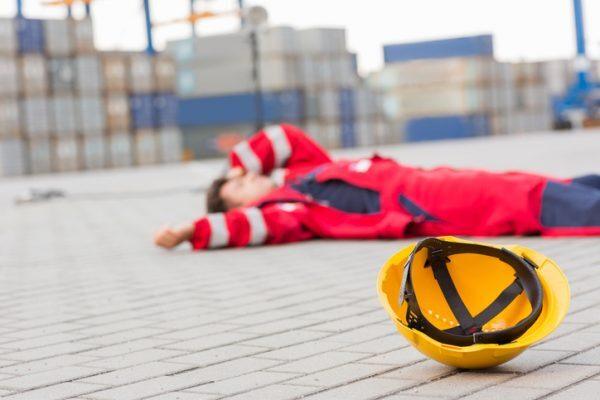Workers being tired on the job can cause problems. One term used to describe this tiredness is “Excessive Daytime Sleepiness.” “Excessive Daytime Sleepiness” can be a causative factor towards work-related injuries. Injuries caused by EDS can range from minor to fatality.
“Sleepiness/fatigue reduces performance capability induced by slow information processing, increased periods of non-responding or delayed responding during attention-based tasks, increased reaction times, reduced vigilance, reduced accuracy of short-term memory, and accelerated decrements in performance with time on-task. This leads to human error and potentially increases the risk for accidents.” Excessive Daytime Sleepiness and Risk of Occupational Injuries in Non-Shift Daytime Workers Melamed, Oksenberg, Sleep Vol 25. No. 3 2002
California Workers’ Compensation Law is a “no fault” system. Therefore, an injury caused by EDS, in most circumstances, would be considered as work-related. If the injury is considered work-related, the Injured Worker would be entitled to workers’ compensation benefits which include monetary compensation for temporary and permanent disability, medical care, vocational rehabilitation benefits and death benefits.
This article will discuss how EDS can be a causative factor for work-related injuries.
What is the Law Concerning Accidents at Work That Have Non-Industrial Causes?
The Supreme Court in Employers Mutual Liability vs. IAC (1953) 18 C.C.C. 286, addressed the issue of a Worker who had a seizure at work and injured himself. The cause of the seizure was unknown. The medical term such a condition is idiopathic.
The Court noted that ”[i]t is settled in this state and elsewhere that an injury suffered from a fall on the employer’s premises, in the course of employment, from a height or on or against some object, arises out of the employment and is compensable, even though the fall was caused by an idiopathic condition of the employee.”
It was noted that “[t]he fact remains that he injured himself while at work, on his employer’s premises, the injury being the striking of his head against the floor, a condition incident to the employment. His condition may have been a contributory cause but it was not the sole cause of his injury. It would not be doubted that if an employee fell to the ground or floor in the course of his employment, and as a result was injured, the injury would be compensable whether the cause of the fall was a slippery or defective floor, or was due to nothing more than his innate awkwardness or even carelessness.”
In sum, an EDS episode is analogous to an idiopathic seizure. As a result, if there was an injury that was a result, i.e. such as striking the ground or a machine with one’s body causing orthopedic injury.
What Is Excessive Daytime Sleepiness?
Excessive Daytime Sleepiness (EDS) denotes a propensity to doze off or fall asleep unintentionally during the day, particularly in passive situations. Excessive Daytime Sleepiness and Risk of Occupational Injuries in Non-Shift Daytime Workers Melamed, Oksenberg, Sleep Vol 25. No. 3 2002
What are Sleep Disorders?
There are a large variety of sleep disorders. These include Circadian Rhythm Disturbances, Idiopathic Central Nervous System Hypersomnia. Narcolepsy, and Sleep Apnea.
Is there a Relationship Between Excessive Daytime Sleepiness and Sleep Disorders? Does It Matter?
Yes. The relationship between Sleep Disorders and Excessive Daytime Sleepiness is not parallel. One can suffer from various sleep conditions and not be subjected to Excessive Daytime Sleepiness. This fact will be shown important when looking at the scientific data.
“Neurologic disorders associated with increased daytime sleepiness include central sleep apnea syndrome, narcolepsy, idiopathic hypersomnia, periodic limb movement disorder, restless leg syndrome, depression, brain tumors, posttraumatic hypersomnolence, multiple sclerosis, encephalitis and post encephalopathy, Alzheimer’s disease, Parkinson’s disease, multiple system atrophy, and neuromuscular disorders with sleep apnea. “ AMA Guides for Rating Permanent Impairment 5th Edition
Does Excessive Daytime Sleepiness increase the Risk of Occupational Injury?
Non-shift daytime workers with EDS, even if physically active, may be at a twofold risk of occupational injury compared with their counterparts without EDS. Excessive Daytime Sleepiness and Risk of Occupational Injuries in Non-Shift Daytime Workers Melamed, Oksenberg, Sleep Vol 25. No. 3 2002
If I there is a Sleep Disorder and Poor Sleep Habits, Will That Means an Increase Risk of Occupational Injury?
Sleep disorders (per se) and poor sleep habits do not confer an increased risk of occupational injury unless they are associated with EDS. Supra.
How Does One Know or Test Whether They have Excessive Daytime Sleepiness?
While the AMA Guides for Rating Permanent Impairment 5th Edition notes that “It is expected that the diagnosis of excessive daytime sleepiness has been supported by formal studies in a sleep laboratory,” there is a more time and cost effective way of initially addressing Excessive Daytime Sleepiness.
The Guides note that “[t]he clinician can evaluate sleepiness with the Epworth Sleepiness Scale, which assesses the likelihood of dozing (never = 0 to high chance = 3) in different situations: sitting and reading, watching television, sitting in a public place, riding as a passenger for an hour, taking an afternoon nap, sitting and talking to someone, sitting after a nonalcohol lunch, and stopped in traffic in a car. A score of 10/24 is equal to excessive sleepiness, or class 2 impairment.” AMA Guides for Rating Permanent Impairment 5th Edition
What If I Need Legal Advice?
If you would like a free consultation concerning any workers’ compensation case, please contact the Law Offices of Edward J. Singer, a Professional Law Corporation. They have been helping people in Central and Southern California deal with their worker’s compensation cases for 28 years. Contact us today for more information.
